spoiledbroth
Senior Member
- Joined
- May 17, 2015
- Messages
- 1,764
- Reaction score
- 4
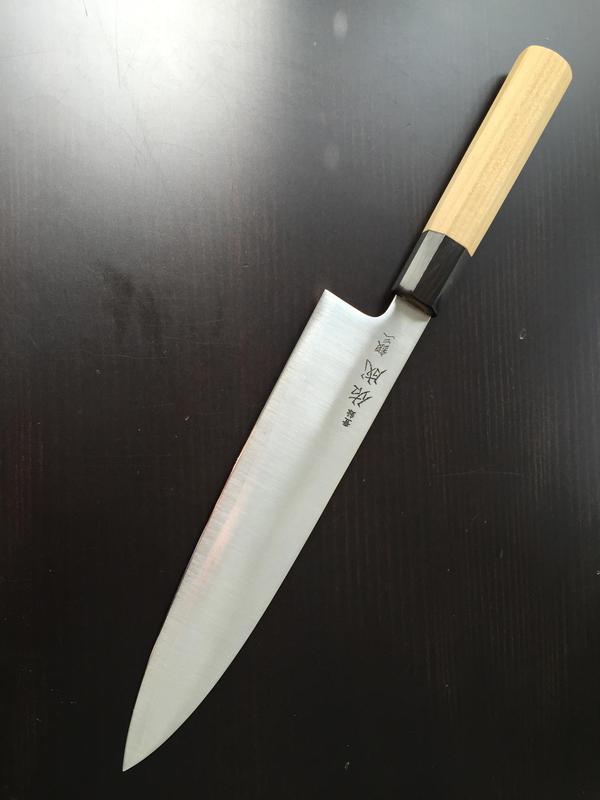
credit for this photo: maiko
So after seeing a few of mark76's reviews, I thought I would offer one of my own. Sorry for the cellphone pics, but they're all I have! I am kind of proud of the choil shot though, pretty good for an outdated iPhone. :wink:
I have never seen much information about Sukenari out there, however I know some people here have Sukenari knives. I find this strange, because I have been very impressed with mine so far. Overall, this particular knife seems to be very good value for money.
The specs according to HiromotosToGo:
- heel to tip length: ~231mm
- blade height @ heel: 50mm
- width of spine @ heel: 2.6mm
- weight: ~182g
- construction: hou wood/buffalo horn octagonal handle, Hitachi Ginsanko clad in SUS405
- ~61-62 HRC (steel analysis pdf)
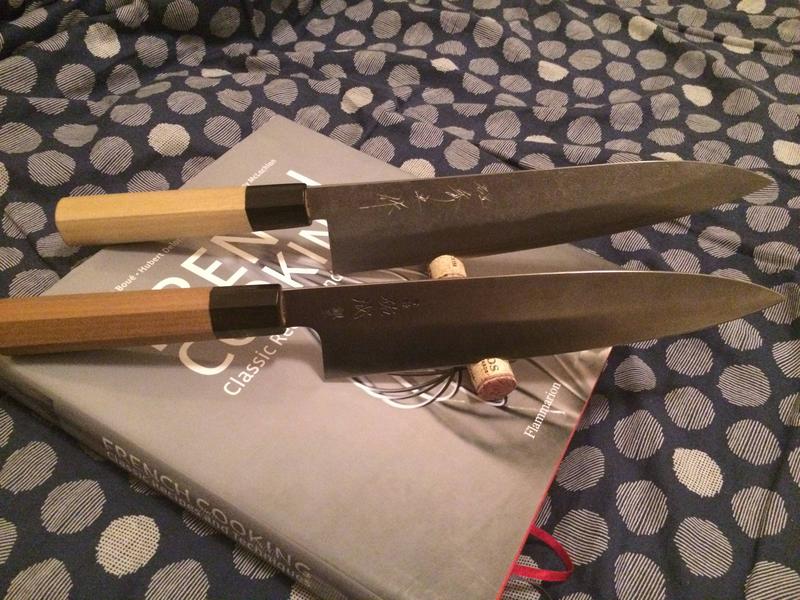
After talking a bit with Koki, it is my belief that this knife is stamped, and not forged. The spine is very uniform in thickness until about the last inch where it tapers very nicely. I do not have calipers but it is quite a thin tip and actually in my opinion is, at least at the spine, thinner than the tip on my Tanaka ginsan 240. You can't see the tip in the pic below but the uniformity of the spine leads me to believe Koki.
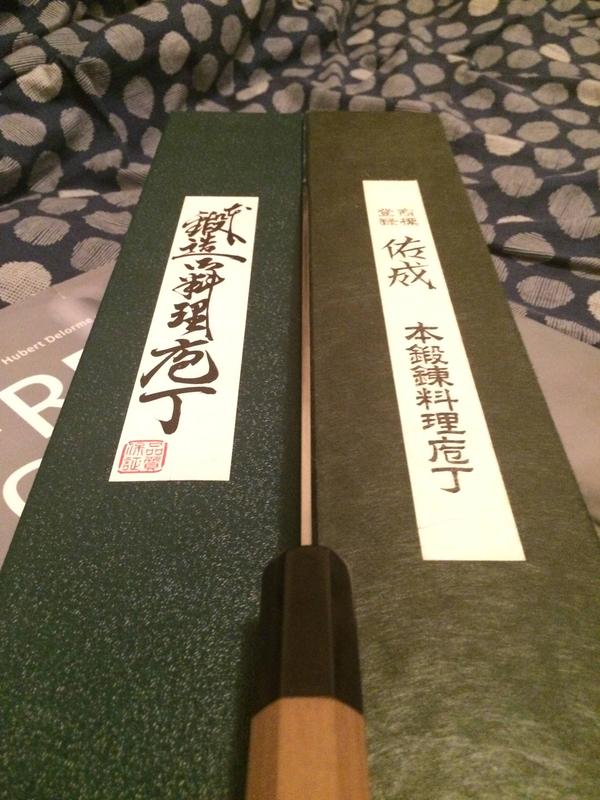
Overall, I would say the knife is actually quite pleasant to look at. Fit and finish is excellent for the 200 dollar price range, in my opinion. The spine is rounded nicely, but the first owner polished up the choil so I cannot comment on stock choil.
I was actually a little surprised to find it only weighing in at 182g or thereabouts, I don't know why but I expected more. It feels good and sturdy in hand. It is rightfully characterized as being on the lighter end of a middle-weight class of knife. Very appropriate for use in a professional kitchen, this knife has little to no flex.
The stock hou handle is well made, and my blade is set dead centre into the handle. The blade seems to have been glued into the handle, for those who wonder about such things. Sukenari handles are noted for being slightly oversized. I found mine looks a little too large for the blade but in practice it is very comfortable and does not cause problems. I have big hands though, YMMV.
To my eye, the grind is fairly asymmetrical (lefties beware), with a good convex grind reaching its apex about halfway down the right side of the knife, whilst the left side is nearly flat. Food release is nothing to write home about, but it's not horrible either. I have yet to experience cracking or wedging on any root vegetables. I was cooking up a nice big celery root the other night and chopped that sucker in half no problem. I have had difficulties wedging almost every other time I have cooked with larger celeriac. No steering to speak of, and no problems with onion (dice, brunoise, whatever).
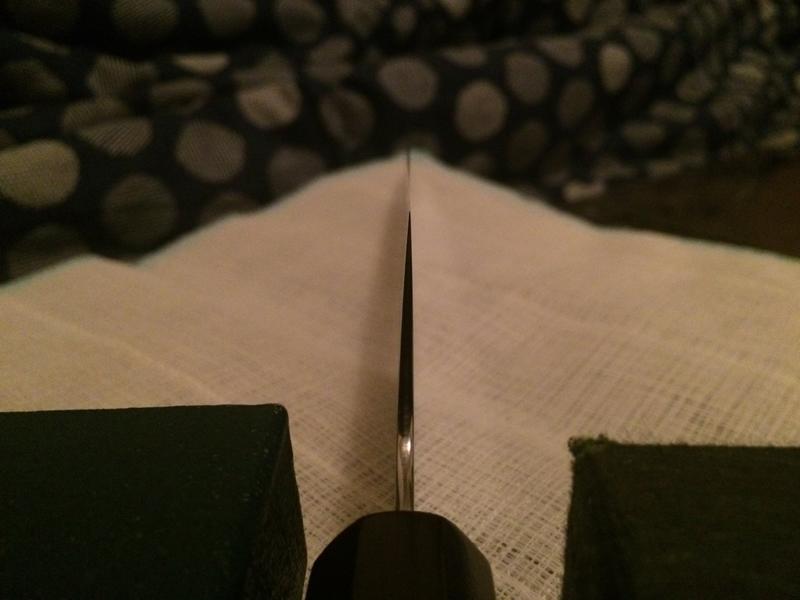
Edge retention is very good, I find myself only having to touch up on my Rika once a week on a busy week at work. The fingernail test yields no discernable result to me on this knife- compared to my Tanaka which I can see flexing -the Sukenari is solid as a rock. I have used this knife on hi-soft boards, poly boards, end grain boards and even cheap bamboo boards. I have yet to see any rolled edges or chipping (micro, macro, mini, maxi).
The knife came to me second hand with a bit of damage on the tip, but I have since smashed it a few times on stainless sinks, waterstones, etc. and have yet to see any damage.
It does not sharpen up as easily as my Tanaka knives, however, I suspect this is because the Tanakas are wide bevel so there's probably simply less metal to abrade on the those knives in contrast to the Sukenari, which I suspect is a little thicker behind the edge.
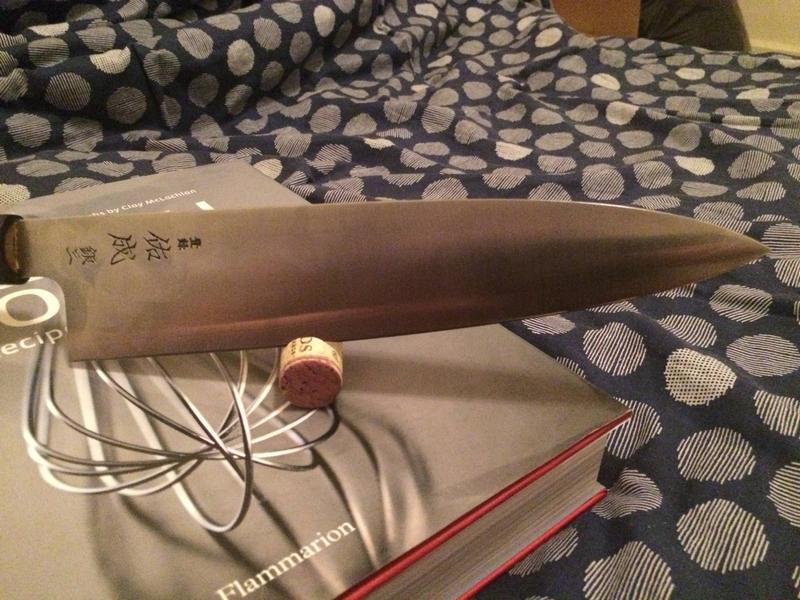
One thing I'd like to note about this knife that I like is the overall profile. It is not something I am used to, compared to the Tanaka and the host of yo knives I have used, this Sukenari has what I would say is a pretty aggressive slope toward the tip. Not quite as much as someone like Robin Dalman whose work came up in the New Buy thread this week, but I actually believe Sukenari knives are designed with the same concept in mind... Bring the tip down in line with the rest of the knife, to keep the user from having to contort his arm to point the knife downward to do tip work.
The knife has a decent flat spot, maybe 1/3 of the edge being flat. Slight upswept heel.
Worked well for me in all styles of cutting (even the occasional cheeky rock chop). Overall I would recommend these knives to both the professional and home user. If you are looking to venture out of the realm of laser-type knives, this is perhaps a nice candidate.
For anyone who is interested, JCK will be carrying these knives soon as well, including a forged version (though not Damascus like what Mark carries). I hope to see more Sukenari knives in the future, they seem to be a no-nosense knife outfit who produces knives aimed at the professional market.
Here is one last photo of the cladding line, because its impossible to see in all the other photos:
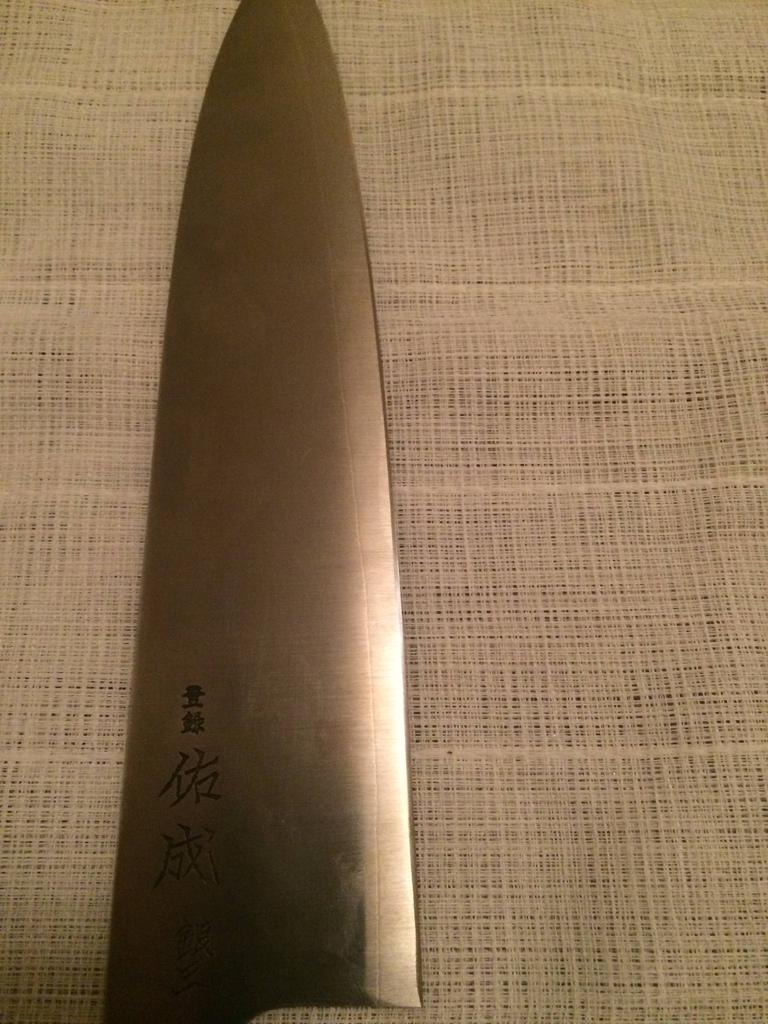
I hope you enjoyed my review. :happymug:




